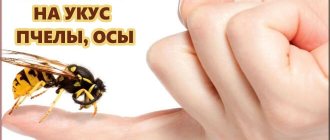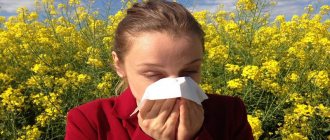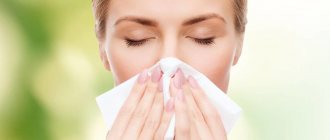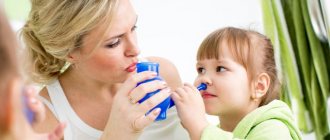What birch trees are there? How and when does birch bloom? Birch flowering calendar Pollen monitoring Causes of birch allergies Symptoms Diagnostics Allergy treatment Cross-reactions Diet Avoiding pollen What to do when a birch tree blooms
I never would have thought that I would be interested in botany. Allergies stimulated my dormant interest in trees and grasses, especially birch and alder. Now I photograph birch catkins, carefully examine alder pollen and do many other strange things to the delight of children and random passers-by.
This also has its advantages, for example, I can spend hours telling mothers on the playground about the insidiousness of the birch, how it carries its poisonous pollen across hundreds of kilometers just to annoy allergy sufferers.
Sometimes, at night, I want to organize a collection of signatures and launch a bill encouraging the cutting down of birch trees. Sometimes you want to go live in the desert. But while I’m here, I have to put up with and study my enemy.
Birch pollen, this unofficial symbol of Russia, is a real horror for allergy sufferers. I heard that at conferences of allergists, foreign doctors are amazed at the activity of our northern birches in comparison with southern European ones. The pollen concentration in our birches can be thousands of times higher.
In the European part of Russia, birch trees bloom from mid-April to June, which means that for allergy sufferers the time has come for poor health and possible, God forbid, acute reactions.
What is it about?
Allergy to birch blossoms is a problem that greatly reduces a person’s quality of life. Many of our contemporaries suffer from such a reaction. The characteristic symptoms of the case are known, doctors know how to treat an allergic reaction. Prevention measures have been developed. To improve your quality of life and minimize risks for yourself, you should navigate this issue. Almost every large and developed country on our planet has special resources dedicated to controlling the activity of allergens, including birch. Using them, you can understand in advance when a dangerous period begins, prepare for it, or even leave these regions for safer ones until the tree finishes blooming.
Under the crossfire
I breastfed the child until he was 2 and 4. There was never a rash or heat rash. This spring, when everything bloomed, the child developed atopic dermatitis on the arms. Through an acquaintance, we went for a consultation with an allergist-immunologist, a professor at the Sechenov Institute.
We were tested at the Institute of Allergology and Clinical Immunology. Blood from a vein. Result: allergies to everything, the data are times higher than normal.
Doctor's conclusion. Nobody knows how the allergy will manifest itself further. FOR prevention, you do not need to give anything. Summary table of products with varying degrees of potential allergenicity.
Good afternoon I ask for help from mothers of children with allergies!
How and when birch trees bloom
My daughter is 2 years 3 months old. Almost from birth we have problems with allergies. For about a month, my daughter has been drinking hydrolysate formulas, after severe rashes began on the milk formulas. Before the introduction of complementary foods there were no special problems. But since the introduction of complementary foods, we have been constantly on all kinds of diets, and they are becoming tougher and tougher.
About a month ago, we were tested for allergens, and an allergy to all types of cow's and goat's milk and birch was confirmed. The list is approximate and can be used to correct the diet of nursing mothers, etc. But at the same time, YOU must understand that an individual diet is selected based on your child’s tests.
At the same time, there is no need to wait years and waste time and blood to detect specific antibodies to immunoglobulins of different classes E G, etc. We have a category “dietary dishes”. It seems to be good, but I couldn’t find any that were highlighted or marked “hypoallergenic”.
There is such a problem in this world and it torments quite a large number of people. And as soon as this infection goes away, there will be a howl from dietary restrictions. I was also struck the other day. At first I was in awe that I would have to live on buckwheat and rice for three months, since there was too wide a range of allergens, and then I sat at the computer, rummaged through the omniscient Internet and made up a menu for myself. We decided to go to the garden to decide on food, and so we immediately prepare for next spring.
Login Registration. My community. Create your own community of interests, publish materials and set your own rules of communication. Create a community. My community For girls who love pink wine! Today there are 5 entries. Answers to BB. Exchange knowledge and experience: and get answers. Ask a Question. Find girlfriends. Find girlfriends. My diary. Connect with other moms and make friends, get support and answers to questions.
Keep a diary. To help mom. Photo contests Participate and win prizes!
Test drives Apply and become a test drive participant. Horoscopes Mercury in the 3rd phase of the moon mysteriously affects the stars around you. Home page. Pregnancy Calendar. Child development calendar.
Useful articles. Reviews about medicines.
What do we know about nature?
To understand how and where allergies to birch blossoms come from, you should first turn to the scientific definition of this plant. The term refers to a deciduous tree belonging to the family of the same name. In our country and those located nearby, birch is one of the most common representatives of the plant world. This is more common in the northern regions. Scientists have identified more than a hundred varieties and varieties of birch.
Since ancient times, people have learned to use different parts of the plant for their own benefit. Methods for consuming the juice have been developed; the bark and wood of the plant are useful. Branches and leaves, birch buds are widely used in everyday life and folk medicine.
It is known that allergies to birch blossoms most often develop in May, since this is the month when the main flowering of the plant occurs. In each specific area, dates are determined by the climate and characteristics of the current season. In some areas, flowering begins already in April, in others it lasts until the second half of June. There are special resources dedicated to the flowering periods of various popular plants. They pay special attention to birch.
Allergies: general information
Allergy to birch flowers is a factor that significantly reduces the enjoyment of the spring season for a huge number of people. If you have an allergic reaction, it is very difficult to survive the appearance of pollen. Scientists, studying the specifics of this issue, have determined why many people develop severe allergies. Everything was explained by the peculiarities of the molecular structure of the biological material released during flowering. Pollen is essentially a complex of proteins formed by more than four dozen varieties. As an allergen, birch is a rather heterogeneous object. Several components of pollen are known, each of which can provoke an allergic reaction. The most aggressive protein is Bet v1. It was designated major. The Bet v2-6 proteins were called minor. They are also capable of initiating an allergic response in the body, but only complement the effect of the main compound.
Allergy to birch pollen in children and adults is a sensitivity reaction, scientifically called sensitization. The likelihood of its occurrence is determined by the perception of a major allergen protein. Other antigens are responsible for the variety of plant forms that can initiate a cross-response in the body. The severity of the body's reaction depends on the activity of the key antigen, its homology and the same quality of additional proteins. The more minor antigens, the more severe the disease.
First signs and symptoms
As a rule, cross-allergy in adults and children does not go unnoticed. Its manifestations are very similar to those of ordinary allergies. Such symptoms include rhinitis, lacrimation, itching and burning of the skin, swelling of the mucous membranes, bronchial asthma, urticaria, dermatitis, etc.
All patients with hay fever should try to completely exclude honey and any other bee products, as well as alcohol, from daily consumption for the entire spring-summer season. The fact is that the substances they contain can not only provoke allergic reactions, but also reduce the effectiveness of antihistamines.
Many people confuse seasonal hay fever with a cold. Some signs are similar to acute respiratory infections, but there are also differences:
- in case of an allergic reaction, the nasal discharge is liquid, the color, consistency and smell of the mucus do not change during the period of birch flowering;
- the temperature with allergies rises infrequently, usually up to 37.2 ... 37.5 degrees;
- cold pills have virtually no effect on the nature of negative reactions;
- There are signs of hay fever that are not present in acute respiratory infections: redness of the conjunctiva, swelling of the eyelids, active lacrimation, sneezing attacks when going outside, swelling of soft tissues (often pronounced), digestive disorders, bronchospasm.
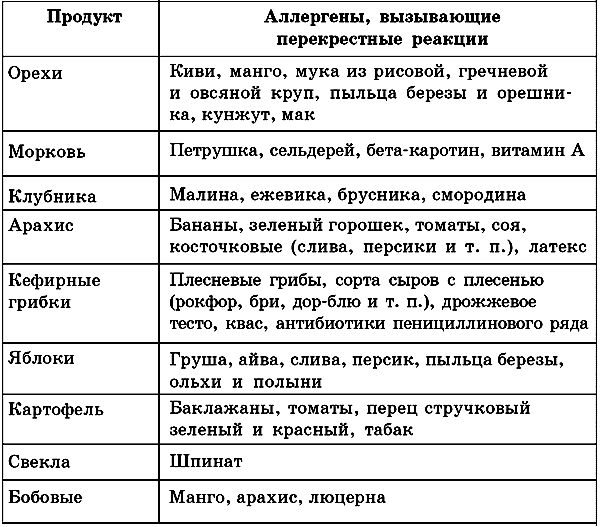
The main signs of respiratory allergies:
- itching, burning in the nasal passages;
- hyperemia of the conjunctiva and eyelids;
- nasal congestion;
- frequent sneezing;
- accumulation of mucus in the nasopharynx;
- swelling of varying degrees (with high sensitivity to the action of pollen, angioedema develops);
- thin, clear nasal discharge;
- diarrhea;
- itchy skin, sore throat, palate;
- difficulty breathing and swallowing;
- nausea;
- swelling, redness of the face;
- anaphylactic shock is quite rare.
Severity of respiratory allergy manifestations:
- light. The discomfort is mild, the patient can do without medication, the attacks are short-lived;
- average. The signs become more active, the symptoms are varied, and allergy manifestations interfere with work, daily activities, and study. Appearance deteriorates due to watery, swollen eyes, stuffy, swollen nose;
- heavy. The signs are clearly expressed, hay fever provokes insomnia, irritation, and disturbance of emotional balance. Requires medication and a hypoallergenic diet. Lack of therapy provokes the development of bronchial asthma and food allergies.
Hay fever is a chronic disease of an allergic nature. The more accurately the patient follows the rules of prevention, the lower the likelihood of attacks.
Parents should know: treatment of seasonal allergies in children requires patience, regularity of procedures, and a course of taking antihistamines. Without constant attention to the baby’s health, a respiratory disease threatens to take root in the body for a long time. Treatment of bronchial asthma as a complication of hay fever is a long, expensive, and not always successful process.
Therapy for patients of any age consists of several elements:
- allergen elimination;
- hypoallergenic diet;
- taking medications;
- correction of home care methods;
- ASIT therapy method to reduce sensitivity to respiratory allergen;
- prevention.
Diet and nutrition rules
Not only highly allergenic foods are prohibited, but also types of food that provoke a cross-reaction when exposed to an irritant. It is important to take into account the individual characteristics of the body in adults and children, but there is a list of names with components similar in action to the main allergen.
During exacerbations you should not use:
- alcohol;
- citrus fruits, especially oranges and tangerines;
- conservation;
- ready-made sauces;
- pickles, pickled vegetables;
- baked goods;
- sweets, especially those with preservatives and dyes;
- smoked meats.
Medications
Main groups of drugs:
- syrups, drops, allergy tablets. In acute form: Tavegil, Suprastin, Diazolin, Diphenhydramine. For mild to moderate allergies: Erius, Cetrin, Xyzal, Loratadine and others;
- sorbents. The drugs remove allergens and toxins from the body. Multisorb, Enterosgel, Laktofiltrum, Smecta, Polyphepan, Enterumin, Filtrum, White coal, Sorbex, activated carbon;
- ointments and creams for allergies with antihistamine action for skin rashes. Psilo-balm, Fenistil-gel, Ketocin, Dermadrin;
- calcium gluconate to reduce sensitivity to respiratory allergens and strengthen the immune system;
- eye drops for allergies. Optikrom, Opatonol, Cromohexal, Zaditen, Ketotifen;
- nasal drops for allergic rhinitis. Cromohexal, Beconase, Cromoglin, Adeltsin, Nazonex;
- preparations for rinsing the nasal passages. Physiomer, Aqua-Maris, Morimer, Dolphin, Otrivin More, Allergol.
In what cases should you urgently consult a doctor?
You should not hesitate to call an ambulance if the following signs appear:
- difficulty breathing, wheezing;
- pronounced swelling of the lips, eyelids, neck, face, tongue, larynx;
- purple blisters on various parts of the body. The more the tissues swell, the lighter the formations become. Pale blisters with a red border are signs of a dangerous reaction - Quincke's edema;
- a sharp drop in blood pressure;
- convulsions, clouding of consciousness, fainting.
How to recognize an allergy to Analgin and what to replace the medication with? We have the answer! Learn about the symptoms of allergies to cat hair and the treatment of pathology from this article. Go to https://allergiinet.com/lechenie/preparaty/deksametazon.html and read the instructions for using Dexamethasone in ampoules for severe allergy symptoms .
Signs of an allergic effect of an allergen on the body are:
- runny nose, nasal congestion, difficulty breathing;
- itching and burning in the respiratory tract, which provoke frequent sneezing;
- inflammatory processes of the mucous membrane of the eyes;
- swelling of the eyelids;
- numbness of the limbs;
- pharyngitis;
- congestion in the ears;
- hives;
- bronchial asthma.
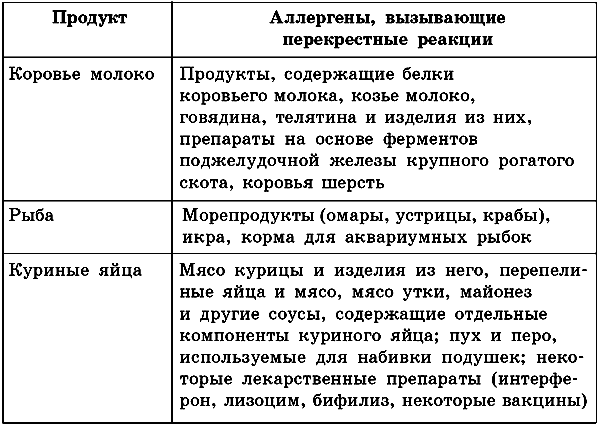
Such symptoms can disrupt the functioning of many human organs and systems.
Is it blooming or not?
If a person is allergic to birch pollen, and during periods of particularly active flowering one can stay at home, in a room with high-quality purified air, the person should know the signs that determine the completion of a dangerous stage of the natural cycle. If you can visually see that birch catkins are flying around en masse, it means that flowering is coming to an end. Male specimens can be seen on vehicles, window sills, and streets. At the same time, the amount of yellowish dust on street surfaces is reduced. However, if it seems that there is not enough dust and the earrings have fallen off, you should not rush outside. Doctors recommend first reviewing resources on environmental allergens. If they recognize the level of a dangerous substance in the air as safe, you can safely return to the usual rhythm of life.
Examples: capital region
Of course, an allergy to birch blossoms in a child and an adult does not depend too much on a specific area, but Moscow seems to be a fairly convenient example for considering the process. Observations and statistical studies have shown that the most dangerous period is the time when the silver birch blossoms. After a short period of time, it is joined by a fluffy variety of tree. After the Moscow ones, the trees of the nearest Moscow region begin to bloom. Phenological studies have shown that the difference in time is from a week or more, while all plants live in the same air basin. The warming of the climate zone will certainly cause a shift in the flowering dates of other plants, so soon birch allergens will support ash and maple ones.
Sometimes there are seasons when there are very few earrings, and not all of them are viable. This is explained by weather vicissitudes: for example, severe winter frosts.
Useful information about birch dusting
Phenophases of birch (information according to Pollen Club):
- Sap flow (if you pierce the bark, sap begins to drip) - begins when the temperature remains stably above 0.
- The first buds develop in 15-17 days.
- The first leaves unfurl after 12 days.
- Flowering - after 1-5 days.
On average, dusting lasts 20 days. The peak of dusting is 3-4 days after the start.
The timing of flowering is usually determined by weather conditions. For example, frequent rains increase the dusting period, rare rains, on the contrary, shorten
It will also be useful to know the stages of birch flowering:
- In summer, earrings are formed, covered with a resinous substance.
- After wintering, when the average daily temperature is more than +5οC, the earrings sag. The first scales begin to open slightly.
- Flowering begins: male catkins reach 5 cm in length, become “loose” and release yellow pollen. Women's earrings are small and green.
- Wind pollination of female flowers occurs. Men's earrings fall off, while women's earrings ripen until the end of summer.

How can you tell if a birch tree has bloomed? Her earrings (men's), for the most part, begin to fall off. There is much less settled yellow-green pollen on the street (cars, window sills, etc.).
Statistical levels of birch pollen in Moscow
To begin with, let's look at what varieties of birch bloom in the Moscow region. The most powerful increase in concentration occurs at the beginning of flowering of silver birch, or warty birch (Betula pendula). After some time, white or downy birch (Betula pubescens) begins to bloom, and then pollen from birches growing in the Moscow region appears in the air. According to phenological observations, the region “lags” behind Moscow by at least a week, but the air basin is the same, and the tree dusting curves are almost identical.
The coming warming will also lead to the beginning of mass flowering of maples and ash trees, and the pollen content of willows and poplars will increase.

Birch pollen levels in Moscow (can be increased, source: pollen.club)
There are few catkins on birch trees in Moscow in 2020, some of which are damaged by cold weather.

Dynamics of birch dusting in Moscow 2020 (source: allergotop.com)
Birch dusting in Russia by year
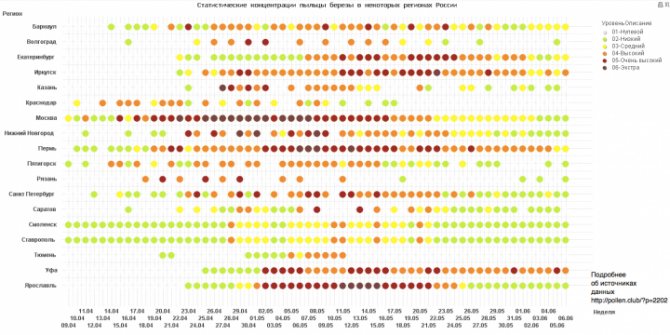
Statistical data on birch flowering in some cities of Russia (source - PollenClub, can be enlarged)
Cross reaction
Cross allergy to birch deserves special attention. Reactivity is especially pronounced within the family to which the tree in question belongs. Consequently, the secretions of alder, oak, hazel, and hornbeam will be dangerous. A set of proteins that can provoke an allergic reaction, similar to birch, is inherent in apple and pear trees, cherry and plum trees, and chestnut. Peaches are dangerous.
Cross allergy to birch is provoked by a number of food products. These include almonds and cucumbers. There is a possibility of an allergic response to pear and apple, soy. Risks are associated with cherries, plums, and peanuts. Possible allergies to celery and hazelnuts. There is a danger of cross-reaction with carrots, cumin, and anise. Similar manifestations are possible when consuming coriander, fennel, and parsley. Oral allergies are most often recorded. Protein beta v2 can provoke reactivity with pollen of plant forms, in which it is contained even in small quantities, as well as with food products that contain profilin. Risks are associated with eating potatoes, tomatoes, and mangoes. Discharge from wormwood, ragweed and timothy grass is dangerous. Substances that initiate an allergic reaction to apples and peaches can provoke a cross-reaction with birch, even if the tree’s pollen previously did not pose a danger to the person.
Prevention measures
What preventive measures to take to prevent the occurrence of cross-allergy depends only on the primary pathogen. For example, if a person experiences regular allergic reactions to pollen, then when various plants and herbs bloom, it is recommended to avoid the places where they grow.
It should also be noted that wearing gauze bandages and sunglasses will protect the human mucous membranes from possible irritation. In addition, wet cleaning of the house and careful personal hygiene will help minimize the number of possible contacts with allergens.
The use of antihistamines is also a reliable way to prevent allergies, including cross allergies.
If a patient has a food allergy, then his usual menu should be well thought out. Thus, a person should exclude all possible irritant foods from his diet.
Among other things, in order to avoid allergic reactions, the patient is recommended to purchase only those cosmetics whose packaging is marked “hypoallergenic.”
Recently, cross-allergies have been registered more and more often, and therefore you should adhere to simple preventive measures that will help maintain your health in good order.
In the present case, preventive measures must necessarily include diet. Since cross-reactive effects may occur with an allergy to birch, it is necessary to exclude from the diet those foods that can provoke this same effect.
To determine what you can’t eat if you have an allergy, you need to study the composition of the food and find out whether it contains products that are similar in protein composition to birch pollen. If present, then such dishes cannot be eaten.
But how can you determine which foods may be allergens and which cannot? There is a special table for this that will help you establish proper nutrition. The list of foods that are best avoided is quite extensive, so below is a partial list of permitted foods.
- bread and bakery products;
- dairy products;
- meat, fish and chicken;
- porridge.
During the period of full flowering, it is recommended to refrain from consuming large amounts of smoked meats, marinades, sweets, and alcohol.
During a birch allergy, knowing what not to eat must be used in conjunction with treatment. If you also move to an area with the least amount of birch trees, you can completely protect yourself from the unpleasant syndrome.
If you have an allergy to birch, treatment is greatly facilitated by preventive measures.
To reduce the impact of pollen on the body, it is recommended:
- keep the windows in the house closed during the birch flowering period, purifying the air using special devices;
- When leaving the house, wear sunglasses that protect your eyes as much as possible;
- carry out wet cleaning of housing daily;
- take a shower at least 2 times a day;
- Wash your face as often as possible to remove pollen from your skin;
- when coming home, put on clean clothes, and immediately send dirty ones to the wash;
- Protect your face with a gauze bandage while cleaning.
On hot days, especially in the evening, when the concentration of pollen in the air is maximum, it is better to refrain from going outside. It is necessary to ventilate the premises after rain. Ionizers and highly efficient air filters clean the air in the house well.
In especially severe cases, when birch allergies are difficult to treat, doctors recommend their patients to take a vacation and leave the region where birch trees grow during flowering.
Compliance with preventive measures, timely treatment and limiting contact with birch pollen will help you experience the flowering season as comfortably as possible.
Features and interesting aspects
To figure out how to treat birch allergies, you must first figure out which parts of the tree are dangerous for an allergy sufferer. The likelihood of a reaction is determined by the presence of pollen traces on the element penetrating into the human body. The juice usually contains elements of allergens; they are also present on the buds and earrings, branches and leaves. Tar and coal obtained from this tree do not contain hazardous compounds, so there is no need to fear an allergic attack.
According to doctors involved in this issue, the protein that initiates the body's response is similar to the proteins of roundworms, that is, the rejection reaction is an attempt to eliminate the invasion of the parasite. The immune system inherent in our body attacks the protein structure, which is followed by typical symptoms. While this assumption is still awaiting final proof, it is regarded by many scientists as promising and trustworthy.
How to treat an allergy to birch pollen in a child?
Birch is one of the most powerful allergens among all trees. Particularly harmful is pollen , which contains more than 40 potentially dangerous protein compounds.
The same applies to the sap and wood of a given tree, but to a lesser extent. It is children who most often suffer from allergies, and parents cannot understand what is wrong. It is necessary to understand this issue. We’ll talk about how to treat birch allergies in a child in this article.
Reasons for the reaction
The main cause of allergies is pollen , which irritates human mucous membranes when inhaled.
Pollen contains more than 40 types of proteins that can cause this problem, but most often it is a glycoprotein.
Allergies appear during the flowering period of the tree from late April to mid-May.
To do this, you need to inhale air along with pollen, and the process starts. Therefore, people usually suffer from allergies if there are birch trees near their home or school.
Risks also increase depending on the weather: dry, hot and windy weather contributes to the spread of pollen, rainy weather does not.
In other cases, the cause of allergies may be tree wood or wood dust . Irritation occurs in the same way as with pollen through inhalation or direct contact.
In rare cases, an allergy may be secondary, that is, the body reacts not to the tree itself, but to fungi that prefer it, such as Cryptostroma corticale, Aspergillus nigricant and Aspergillus alternaria. However, this happens extremely rarely.
How does a cat allergy manifest in children? Find out about this from our article.
Complications
For most, allergies appear during the flowering period. During this period, the child feels unwell, often coughs or sneezes - nothing serious . As soon as the tree stops blooming, the allergy will disappear.
However, some children are particularly sensitive to pollen and experience life-threatening .
In this case, you should be able to cure an attack and know how to behave in this case.
Treatment with medications
How to treat a baby? First of all, you need to limit the child’s contact with a dangerous substance.
Next, it is better to consult a doctor who will prescribe medications depending on the nature of the allergic reaction:
- Nasal congestion and discharge - Nasonex drops and Cromohexal spray.
- Tearfulness and redness of the eyes - Naklof, Zaditen, Ketofen, Cromohexal.
- Inflammatory processes in the mucous membrane of the throat - Dexamethasone (drops, ampoules, tablets).
- Seasonal rhinitis and asthma - tablets Singulair, Telfast and Zodak.
- Skin allergies – Dexamethasone ointment, Hydrocortisone ointment, Hyoxysone ointment.
- Anaphylactic shock - intravenous Suprastin, Prednisolone, Epinephrine or Eufillin.
Inhalations with the drug Lazolvan will help relieve the condition of severe nasal congestion , however, this method provides only a temporary solution to the problem, but does not cure allergies. In addition, inhalations are harmful to children, so doctors do not recommend their use.
If an allergy attack is acute, then it is necessary to call an ambulance rather than try to cure the disease yourself, as there is a risk of threatening the child’s health.
Folk remedies
There are several useful and effective traditional medicine methods for treating allergies:
- Baths with birch buds. Take 1 tablespoon of birch buds per glass of boiling water and leave for 15 minutes. Then the infusion is poured into the prepared bath, which I take 2-3 times a week, gradually increasing the concentration of the decoction. Thanks to this, the child will gradually get used to the allergen causing the disease and can completely get rid of the problem over time. This procedure is dangerous if the child has had cases of anaphylactic shock.
- Strawberry leaves . It is necessary to collect fresh wild strawberry leaves during the flowering period. They are brewed in boiling water (1 teaspoon per 250 ml) and left for 30 minutes. Take half a glass twice a day during an exacerbation of allergies - this will reduce the severity of symptoms.
- Wormwood. The dried stems of the plant are ground in a coffee grinder. For 1 glass, take half a teaspoon and leave for 20-30 minutes, then filter. Drink a quarter glass of the infusion 3-4 times a day to get rid of a runny nose and other manifestations of an allergic reaction.
Natural antihistamines that can help with allergies are also the following herbs:
- nettle;
- dandelion;
- burdock.
These products can be combined or taken separately, choosing the most effective one. It is enough to prepare ordinary infusions or light decoctions and observe the body’s reaction.
Diet
- apples;
- celery;
- kiwi;
- plums;
- new potatoes;
- apricots;
- walnuts;
- pears;
- hazelnut;
- cashew nuts;
- cherries;
- fresh carrots;
- peaches.
also recommended to reduce consumption of the following foods:
- ice cream;
- sugar;
- jam;
- chocolate;
- smoked meats;
- spicy food.
Why are mosquito bites dangerous for children? Find out the answer right now.
Where did the trouble come from?
Doctors treating allergies to birch blossoms in children and adults are trying to determine the reasons for this reaction of the body, but modern science does not yet have sufficient knowledge and technical capabilities, so there are no reliable conclusions. It is known that one of the factors predisposing to the formation of sensitization is hereditary. This plays a role in any response of the body indicating increased susceptibility. In many ways, the likelihood of a reaction depends on the state of the immune system - the worse it is, the greater the risks. An additional danger comes from the need to frequently interact with the allergen.
The risk group includes those who have allergies among their immediate family, as well as people forced to work outdoors in the spring. This includes people with a lack of immunity and women expecting to give birth to a child. The risk of a reaction is higher in children and the elderly.
We are leaving the birch tree
If a child has strong reactions during flowering, it is best not to leave the house, even to kindergarten or school, you will catch up later. Take a certificate and make an agreement with the teachers. Ignore the argument that our classrooms are washed twice a day. In schools, windows are opened and classmates will carry enough pollen on their clothes to provoke a reaction.
It's better for adults to take a vacation. An employee with a running nose and red eyes is unlikely to please the eyes of his superiors.
You need to go to a climate zone where there are no birch trees or where they have already bloomed.
Keep in mind that some southern plants have proteins similar to birch proteins: olive, hornbeam, cypress, chestnut.
Popular destinations for allergy sufferers to escape from mid-April to June: UAE, Jordan, Israel, Canary Islands, Cyprus (beware, dust storms are possible in Cyprus in May), Crete, Turkey.
I can recommend the Pollen Club mobile application, escape map section. On this map, allergy sufferers mark where and when they fled and how they feel there. However, remember, well-being is an extremely subjective thing.
Another important point for those who are allergic to cats. In Cyprus, Egypt and Israel they love cats very much, and there are an inordinate number of them there. Winds lift hair and dander from the ground, which easily penetrates the bronchi and can cause bronchospasm within 30 seconds.
Allergy sufferers with bronchial asthma or mold allergies should not go to Thailand or Vietnam, because the humidity there is high and the concentration of mold can be excessively high.
Russian resorts are dangerous for polyvalent allergy sufferers: in May and June, herbs and other plants bloom wildly there.
For pregnant and nursing mothers, I can recommend an article on our website and a link to the site where you can see the list of approved medications: https://e-lactanciya.org/ru/
About manifestations
Symptoms of an allergy to birch blossoms are similar to manifestations of sensitization to any other substance. The patient suffers from a runny nose, his nose is stuffy and mucous substances are actively secreted. The throat is bothered by itching, spreading to the nasal cavity. The allergy sufferer coughs, sneezes and has difficulty breathing. The eyes itch and turn red, and the secretion of the lacrimal glands is abundant. The mucous membranes swell. A symptom of birch allergy is a general state of weakness.
Regardless of the compound that provokes it, hay fever usually does not provoke symptoms affecting other organs. In rare cases, patients experience rashes and areas of itching of the skin. There is a possibility of hives. A possible symptom of a birch allergy is an area of skin peeling.
In case of cross allergic reaction, oral syndrome is formed. The mouth and pharynx are bothered by burning and itching, the mucous membranes become swollen and red, the esophagus and abdomen feel painful. The sufferer is sick.
What to do when the birch tree blooms - 32 rules
- Do not wait for symptoms, start therapy prescribed by your doctor a few weeks before the birch tree blooms: antihistamines, cromones, montelukast, inhalations for asthma, nasal hormonal sprays. But only if you have had a reaction in the past, test results are not an indicator.
- If you have severe allergies, it is not advisable to skin test for tree pollen. Resume diagnostics in October. A blood test can be done.
- If you react to foods with cross proteins, follow a diet. If foods do not aggravate allergies, a diet is not needed.
- Moisten your nose with saline or isotonic saline solutions.
- You can use nasal barriers - Aqua Maris Sens. Many doctors do not recommend Nazaval, it creates a film on the nasal mucosa, so if we take it, be careful in children.
- Moisturize your eyes, you can use Systane eye drops.
- Do not put tea bags on your eyes, as this may cause bacterial infection and swelling of the eyes.
- There is no need to constantly rinse your eyes with water, as this can cause protective swelling of the eyes. To relieve itching, use allergy eye drops.
- Postpone all vaccinations and planned surgeries until after flowering has ended.
- Reduce the access of pollen to the apartment: do not open windows, use air conditioning and a breather or supply ventilation with a filter.
- Stretch covering material (spunbond) over the windows. Anti-pollen nets do not work well.
- If there are no breezers, and it’s stuffy with the windows closed, remember that the lowest concentration of pollen in the air is from 4 to 8 in the morning. It is better to ventilate for 5 minutes every 2 hours.
- Place an air purifier or air cleaner in the allergy sufferer's room. Let them work around the clock. The purifier will not replace a breather, but it will help clear the air at least a little of pollen.
- Do wet cleaning of your apartment more often. Pollen indoors can be dangerous for a long time (up to 2 weeks).
- Walk less, especially on dry and windy days.
- Walk around wearing a protective mask and goggles.
- Do not walk in the forest or parks. Subbotniks with rakes and barbecues during the May holidays are now only via Skype


